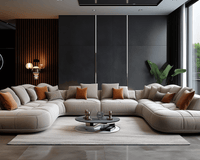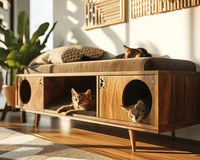Introduction:
In the realm of interior design, the strategic placement of mirrors stands as a timeless art form, capable of infusing spaces with a sense of depth, light, and sophistication. The act of hanging a mirror on a wall, seemingly simple at first glance, unfolds into a nuanced process that requires careful consideration. Beyond mere functionality, the strategic placement of mirrors can significantly impact the overall aesthetic appeal of a room. As we embark on this journey to master the art of wall-mounted elegance, we will explore the intricacies of selecting the perfect location, choosing the right hardware, ensuring precision in installation, and securing the mirror safely. Each step is a brushstroke in the canvas of interior design, contributing to the creation of a harmonious and visually appealing living space.
In the first segment, we will delve into the importance of selecting the perfect location for your mirror, considering factors such as room layout, focal points, and natural light sources. Moving forward, we'll unravel the mystery of choosing the right hardware, understanding weight and size, and exploring the various types of wall anchors and screws suitable for different mirrors. Our journey will then lead us to the precise aspects of installation, emphasizing the significance of accurate measurements, markings, leveling, and alignment.
As we navigate through these intricate details, the guide will not only serve as a practical manual but as an inspiration to transform your living spaces into reflections of your unique style and personality. So, let's dive into the artistry of mirror hanging, where functionality meets aesthetics, and each reflective surface becomes a portal to elegance.
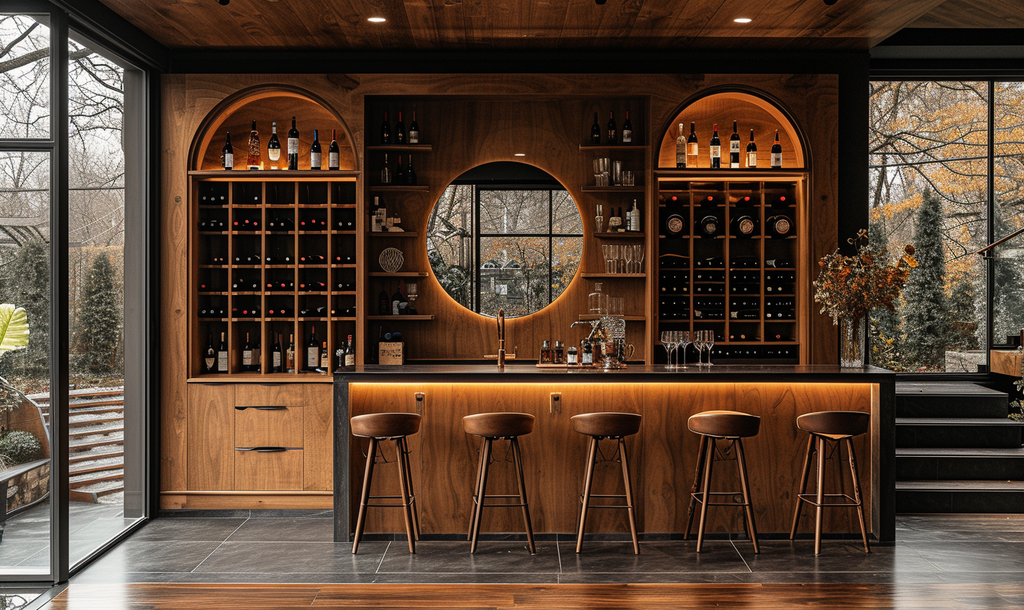
Selecting the Perfect Location
Choosing the ideal location for your mirror is a pivotal step in the art of wall-mounted elegance. The placement not only affects the functionality of the mirror but also plays a crucial role in enhancing the overall aesthetics of the room. Let's delve into the intricacies of this process, breaking it down into three key points:
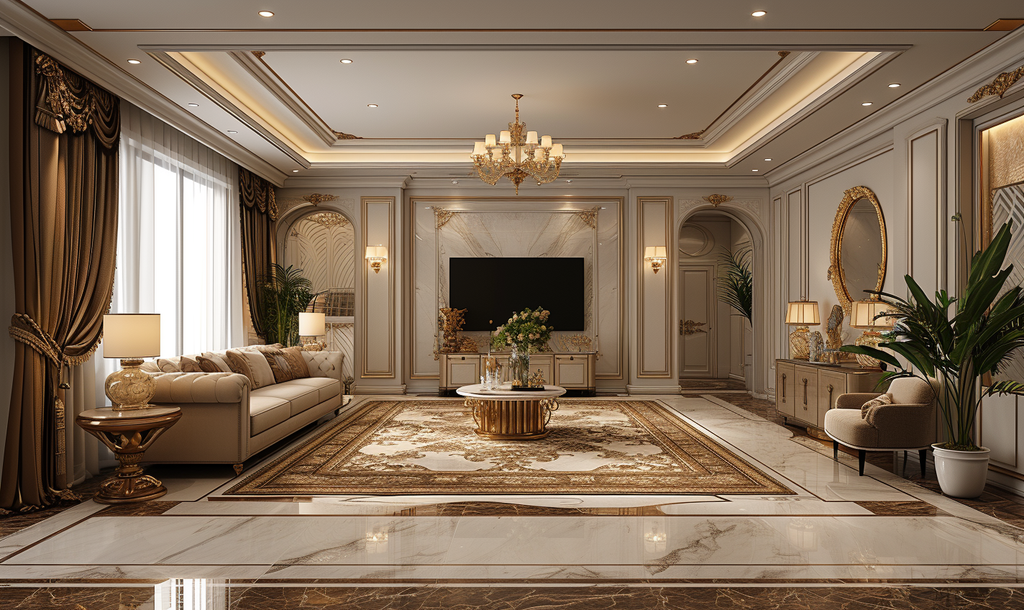
1. Assessing the Room's Layout
Before hammering a single nail, take a moment to evaluate the layout of the room. Identify the focal points – areas that draw attention or serve as the visual center. It could be a fireplace, a piece of furniture, or even a stunning piece of artwork. Understanding these focal points allows you to strategically place the mirror to amplify their impact.
Consider the natural light sources within the room. Mirrors have a magical ability to reflect and amplify light, making spaces appear brighter and more inviting. Place the mirror strategically to capture and distribute natural light effectively. Avoid placing it directly opposite a window, as this may cause glare. Instead, position it perpendicular to the window to maximize the reflective effect without compromising the view.
2. Reflecting Style and Purpose
The mirror you choose and its placement should align with the overall style and purpose of the room. If the goal is to create an illusion of space in a small room, position the mirror where it can reflect the most square footage, such as across from a doorway. On the other hand, if you aim to enhance a particular design element, such as a piece of artwork or a unique architectural feature, place the mirror strategically to highlight and complement that aspect.
Consider the style of the mirror itself – whether it's a contemporary frameless mirror, an ornate vintage piece, or a sleek modern design. The mirror should harmonize with the existing decor, becoming a seamless part of the room's aesthetic. For instance, a large, ornate mirror may serve as a focal point in a traditionally styled living room, while a minimalist, frameless mirror can complement a modern, sleek interior.
3. Practical Considerations for Placement
While aesthetics are paramount, practical considerations should not be overlooked. Ensure that the mirror is hung at an appropriate height for both functionality and visual balance. The general guideline is to position the mirror at eye level, but adjustments can be made based on the room's purpose – higher for decorative mirrors and lower for functional mirrors, like those in entryways.
Additionally, be mindful of what the mirror will be reflecting. Avoid placing it opposite cluttered or unappealing areas, as the reflection will amplify these shortcomings. Instead, aim to capture pleasing views, artworks, or other decorative elements.
In summary, selecting the perfect location for your mirror involves a thoughtful analysis of the room's layout, understanding its natural light sources, aligning with the overall style and purpose of the space, and considering practical aspects such as height and reflections. By mastering this first step, you lay the foundation for a mirror installation that not only serves its functional purpose but elevates the entire ambiance of the room.
Choosing the Right Hardware
Selecting the appropriate hardware is a crucial aspect of hanging a mirror on a wall. The right hardware not only ensures stability but also contributes to the overall aesthetics of the installation. Let's break down this process into three key points, exploring the intricacies of choosing hardware tailored to your mirror:
1. Understanding Weight and Size
The weight and size of your mirror are pivotal factors that dictate the type of hardware required for a secure installation. Begin by carefully checking the specifications provided by the mirror manufacturer. Knowing the weight is essential as it determines the load-bearing capacity the hardware must support.
For lighter mirrors, typically those weighing less than 20 pounds, consider using D-ring hangers or sawtooth brackets. These are easy to install and provide adequate support for smaller mirrors. For larger or heavier mirrors, it's advisable to opt for more robust hardware options such as heavy-duty picture hangers, mirror clips, or keyhole brackets.
Remember that using hardware with insufficient weight-bearing capacity can jeopardize both the safety of the installation and the longevity of your mirror. Always err on the side of caution and choose hardware designed to handle the specific weight of your mirror.
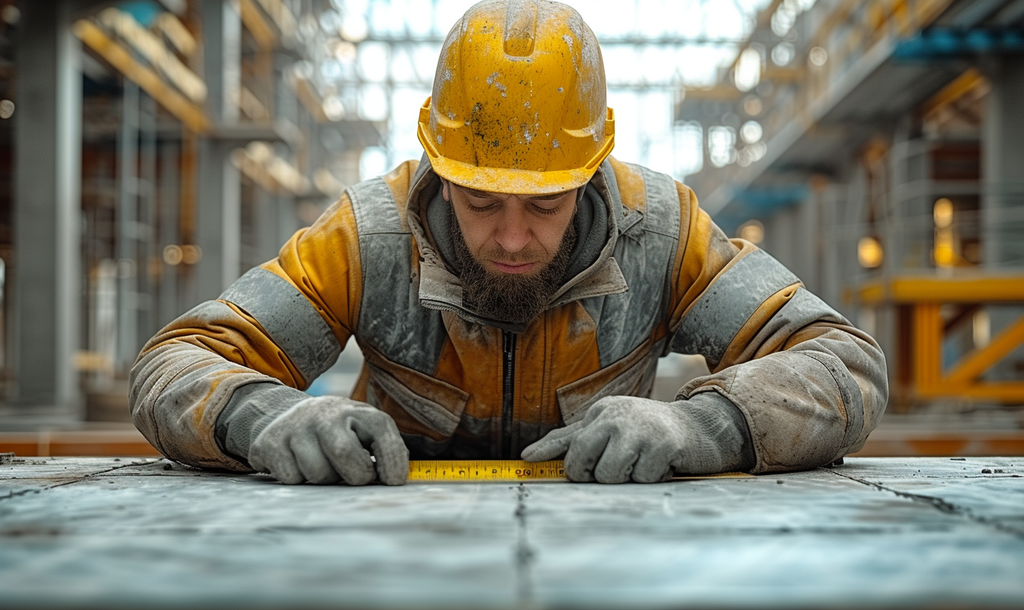
2.Types of Wall Anchors and Screws
Once you've determined the weight and size requirements, the next step is to choose the appropriate wall anchors and screws. Different wall types require specific anchors to ensure a secure attachment. For drywall, plastic anchors are commonly used for lighter mirrors, while toggle bolts are more suitable for heavier mirrors.
When dealing with plaster walls, it's crucial to use anchors specifically designed for this material. Plastic anchors, molly bolts, or expansion anchors work well in plaster, providing the necessary support without causing damage. Be sure to choose screws that match the anchors in size and material, ensuring a snug fit and preventing any compromise in stability.
Always consider the thickness of your wall when selecting anchors and screws. If the wall is thicker than average, longer screws may be necessary to reach the wall studs for increased stability.
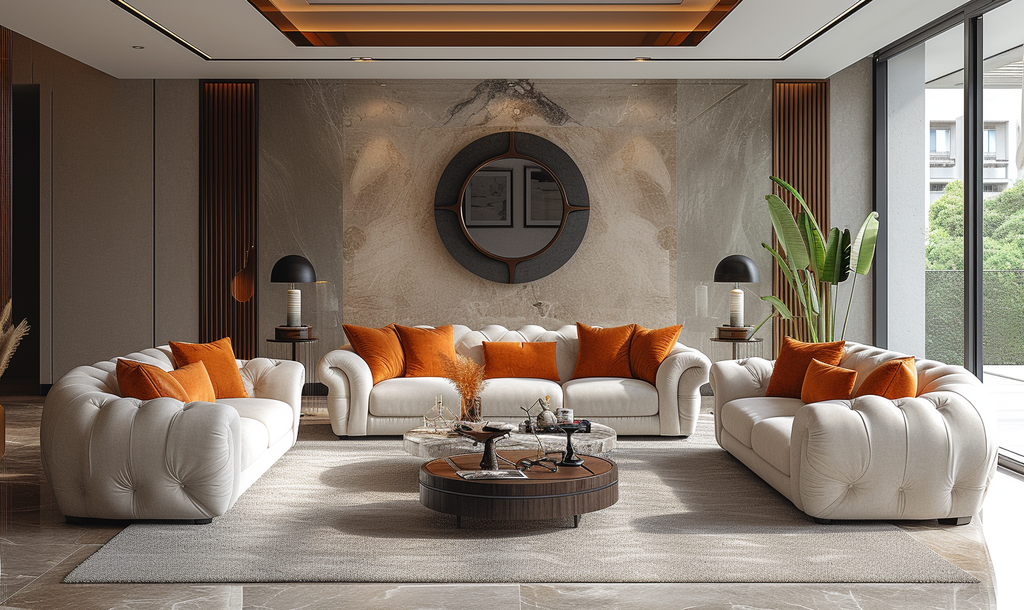
3. Importance of Aesthetic Hardware Choices
While the primary function of hardware is to provide stability, its visual impact should not be overlooked. The hardware you choose contributes to the overall aesthetics of the mirror installation. Opt for hardware that complements the style of your mirror and the surrounding decor.
For a sleek and modern mirror, consider using minimalist hardware or hidden mounting options. Ornate mirrors, on the other hand, may benefit from decorative brackets or clips that enhance the overall design. Take the opportunity to turn the hardware into a design element, ensuring it seamlessly integrates with the mirror and enhances the visual appeal of the entire installation.
In conclusion, choosing the right hardware involves a thorough understanding of the weight and size of your mirror, selecting appropriate wall anchors and screws based on the wall type, and paying attention to the aesthetic impact of the chosen hardware. By meticulously navigating these considerations, you not only ensure the stability of your mirror but elevate its installation to a visually pleasing and harmonious level within your living space.
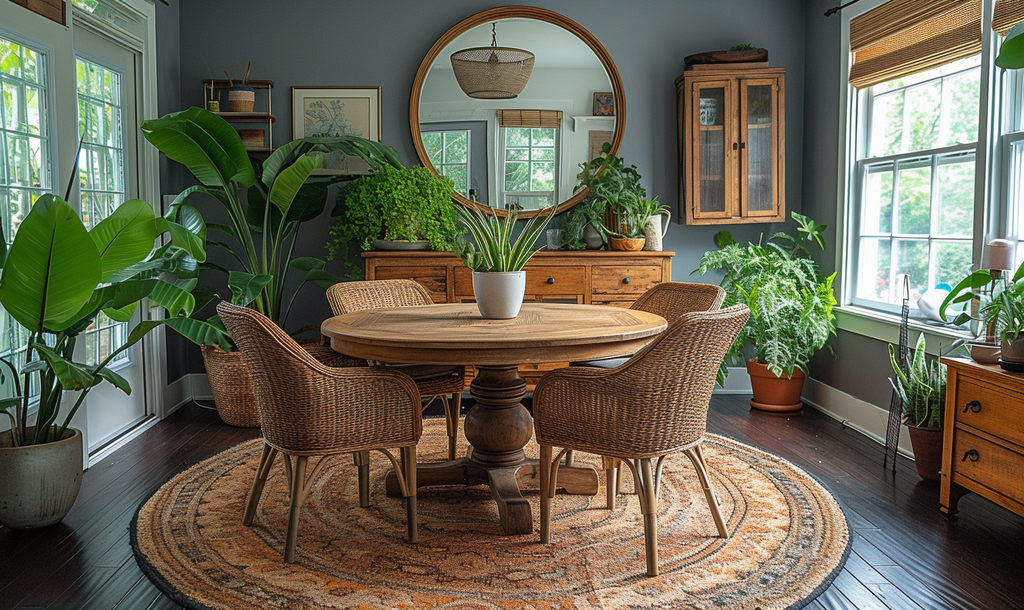
Ensuring Precision in Installation
The installation process of hanging a mirror on a wall is not just about securing it in place; it's a meticulous art that demands precision and attention to detail. Let's unravel the intricacies of ensuring precision in mirror installation, breaking down this process into three key points:
1. Measuring and Marking
The foundation of a perfectly hung mirror lies in accurate measurements and meticulous markings. Before reaching for any tools, measure the dimensions of your mirror and determine the desired placement on the wall. Use a tape measure to ensure precise measurements, considering both the height and width.
Once you have the measurements, mark the exact center point on the wall where the mirror's center will align. For horizontal alignment, mark the mirror's midpoint horizontally. These markings serve as your guide during the installation process, ensuring that the mirror hangs perfectly centered and aligned.
Consider the placement of furniture or other elements around the mirror to maintain visual harmony. Take your time during this stage, as accuracy in measurements and markings sets the stage for a flawlessly installed mirror.
2. Leveling and Alignment
The importance of using a level during mirror installation cannot be overstated. A level ensures that your mirror hangs straight and aligned with the horizon, preventing any disconcerting tilts or crooked appearances. Begin by placing the level along the top edge of the mirror, adjusting it until the bubble centers.
For larger mirrors, it's advisable to have a second person assist in holding the mirror while you make the necessary adjustments. Take into account any slopes or irregularities in the wall, making micro-adjustments to achieve the desired level and alignment.
Horizontal alignment is equally crucial. Use a level or a measuring tape to confirm that the mirror is centered both vertically and horizontally on the wall. This meticulous attention to alignment ensures that the mirror not only looks aesthetically pleasing but also integrates seamlessly into the overall design of the room.
3. Utilizing Mirror Clips and Brackets
Mirror clips and brackets play a pivotal role in ensuring the stability and security of the mirror once it's hung. These pieces of hardware provide additional support, preventing the mirror from shifting or tilting over time. When using clips, position them along the bottom edge of the mirror, securing it firmly to the wall.
For larger or heavier mirrors, consider using brackets on both the top and bottom edges. The brackets should be securely anchored to the wall, distributing the weight evenly and minimizing any risk of sagging or instability. Ensure that the clips or brackets are placed symmetrically to maintain the balance of the mirror on the wall.
Professional installers often recommend a diagonal approach, placing one clip or bracket at the top-left and the other at the bottom-right (or vice versa). This method enhances stability and minimizes the risk of the mirror shifting over time.
In conclusion, ensuring precision in mirror installation involves meticulous measuring and marking, using a level for accurate alignment, and utilizing mirror clips or brackets for added stability. By following these steps with care and attention to detail, you transform the mirror installation process into an artful endeavor, where precision meets aesthetics, and the end result is a flawlessly hung mirror that becomes a centerpiece of elegance within your living space.
Securing the Mirror Safely
Securing a mirror safely is the final and critical step in the process of hanging a mirror on a wall. Ensuring stability not only safeguards the mirror itself but also prevents potential accidents or damage. Let's explore this aspect further, breaking it down into three key points:
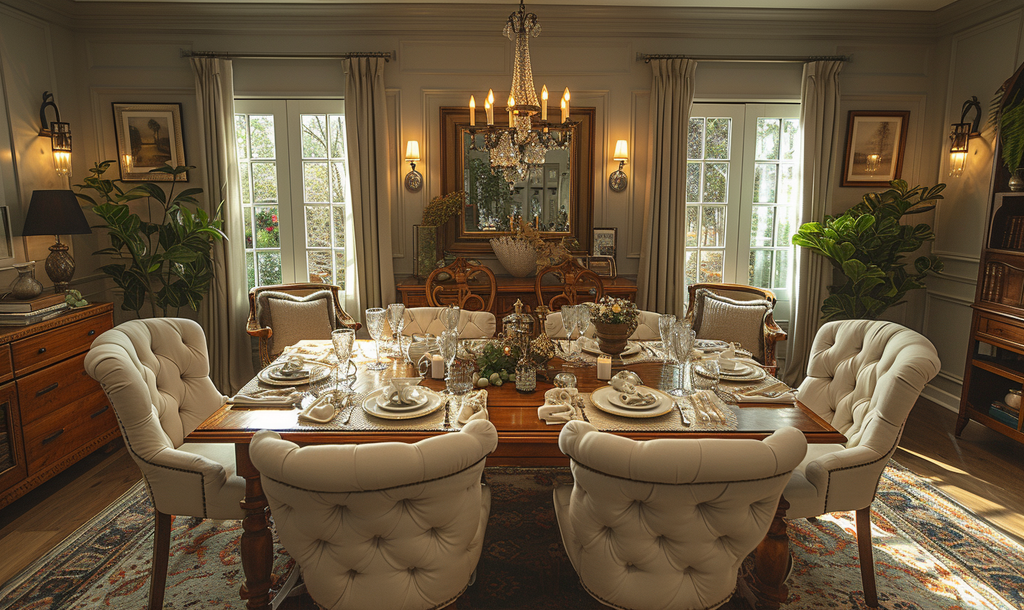
1. Utilizing Mirror Clips and Brackets
Mirror clips and brackets are not only instrumental in achieving precision during installation but also play a vital role in providing ongoing stability. Once the mirror is perfectly aligned, securely fasten it to the wall using these hardware options.
For smaller mirrors, mirror clips positioned along the bottom edge may suffice. Ensure that the clips are of high quality, firmly attaching to both the mirror frame and the wall. For larger or heavier mirrors, consider using brackets on both the top and bottom edges. This distributes the weight evenly and minimizes the risk of sagging or tilting over time.
When attaching the mirror clips or brackets, follow the manufacturer's guidelines for spacing and positioning. Often, a diagonal approach, using clips or brackets at opposite corners, enhances stability. This method ensures that the mirror is well-supported, reducing the likelihood of it shifting or becoming unbalanced.
2. Professional Installation Tips
For particularly large or heavy mirrors, or if you're uncertain about the proper installation method, it's advisable to seek professional assistance. Professional installers bring expertise and experience, ensuring that the mirror is securely mounted with the appropriate hardware.
Professionals may recommend additional measures, such as using toggle bolts or wall anchors for added reinforcement. These mechanisms penetrate the wall more deeply, anchoring the mirror securely to the wall studs. While it may incur additional costs, the peace of mind and long-term stability they provide make it a worthwhile investment, especially for valuable or irreplaceable mirrors.
When opting for professional installation, ensure that the installer understands the specific requirements of your mirror, including its weight, size, and the type of wall it will be mounted on.
3. Regular Maintenance and Inspection
Securing the mirror doesn't end with the installation process. Regular maintenance and periodic inspections are essential to ensure ongoing stability. Check the tightness of mirror clips or brackets periodically, tightening any screws that may have loosened over time.
Inspect the wall anchors and screws for any signs of wear or deterioration. If you notice any issues, such as rust or bending, address them promptly to prevent further damage. Regular maintenance not only preserves the stability of the mirror but also contributes to its longevity.
In conclusion, securing a mirror safely involves using reliable mirror clips or brackets during installation, considering professional assistance for larger or heavier mirrors, and implementing regular maintenance and inspections. By paying careful attention to these aspects, you not only enhance the stability of the mirror but also contribute to a safe and aesthetically pleasing living environment. Remember, the investment in securing your mirror properly is an investment in the longevity and safety of your decorative masterpiece.
Conclusion:
In drawing the curtains on our exploration of how to hang a mirror on a wall, we unveil a world where functionality harmoniously dances with aesthetic appeal. The process, once perceived as a mere utilitarian task, emerges as a meticulous art form with the potential to redefine the character of any room. As we reflect on the journey, it becomes evident that the placement of a mirror is not just about practical considerations but a strategic move to elevate the ambiance of a space.
The importance of selecting the perfect location becomes a guiding principle in this artistic endeavor. By assessing the room's layout, identifying focal points, and considering natural light sources, one can master the subtle dance between light and space, creating an environment that is both visually captivating and functional. Reflecting on style and purpose adds another layer to the narrative, allowing mirrors to become more than mere accessories but integral elements in the composition of a room's design.
Choosing the right hardware, as uncovered in our guide, becomes the silent guardian of our decorative aspirations. Understanding the weight and size of the mirror, coupled with the careful selection of wall anchors and screws, ensures not only stability but a seamless integration into the existing aesthetic.
Precision in installation emerges as the linchpin of success, where accurate measurements, meticulous markings, and a commitment to leveling and alignment weave together the fabric of a flawlessly hung mirror. It is in this precision that the mundane transforms into the extraordinary, and the mirror becomes more than a reflective surface but a work of art.
Securing the mirror safely concludes our journey, emphasizing the importance of mirror clips, brackets, and, when necessary, seeking professional assistance. Safety and longevity become paramount, ensuring that the mirror not only enhances the room's aesthetics but stands as a testament to enduring design.
In conclusion, as you embark on your mirror-hanging endeavors, remember that each step is a brushstroke in the canvas of your living space. The reflection in the mirror is not just an image; it's a reflection of your style, personality, and attention to detail. Let the mirrors on your walls be more than mere reflections – let them be portals to elegance and sophistication. May your spaces be transformed, not just by the mirrors you hang but by the artistry you infuse into the process. Elevate your living spaces, one mirror at a time, and watch as the reflections unveil a story of timeless elegance and curated design.
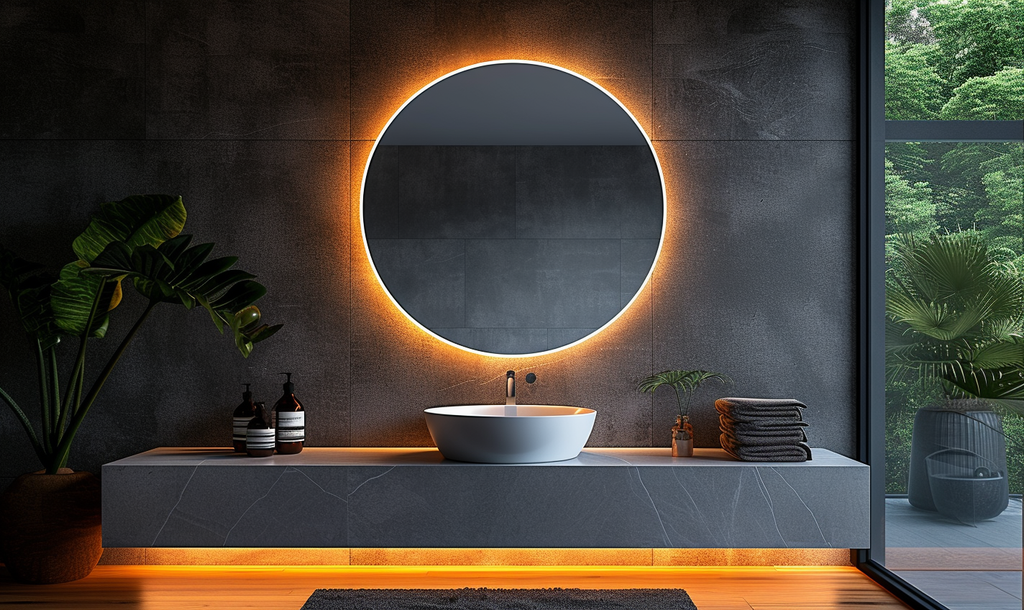
FAQs: Frequently Asked Questions
Q: Can I hang a mirror without any tools or hardware?
A: While some lightweight mirrors can be hung with adhesive hooks, it's generally advisable to use proper hardware for stability.
Q: How do I clean and maintain a wall-mounted mirror?
A: Use a non-abrasive cleaner and a soft cloth. Avoid spraying directly on the mirror to prevent damage to the backing.
Q: Can I hang a mirror on a plaster wall?
A: Yes, but it's crucial to use the appropriate anchors and screws designed for plaster walls.
Q: What should I do if my mirror is too heavy for the wall?
A: Consider redistributing weight, using multiple anchors, or consulting with a professional for reinforcement.
Q: Can I hang a mirror in a bathroom with high humidity?
A: Yes, but it's recommended to choose a mirror with moisture-resistant backing or use proper ventilation to prevent damage.
Call to Action: Elevate Your Space with Precision and Style!
Hanging a mirror is not just a functional task but an opportunity to elevate your space with precision and style. Follow the comprehensive guide above to ensure a flawless installation, transforming your room into a reflection of sophistication. Don't hesitate to share your mirror-hanging success stories or ask for additional tips in the comments below!
-------------------------------------------------------------
Your encouragement and support are the driving force of our creation. If you want to support us, you can pay a small amount of Bitcoin or Ethereum to the following address:
Bitcoin:
bc1q56xsdwhnva969w38808yu3erxjrxqludn9ehg9

Ethereum:
0x555C43d02140634250e965F963733Fb32F974D67






